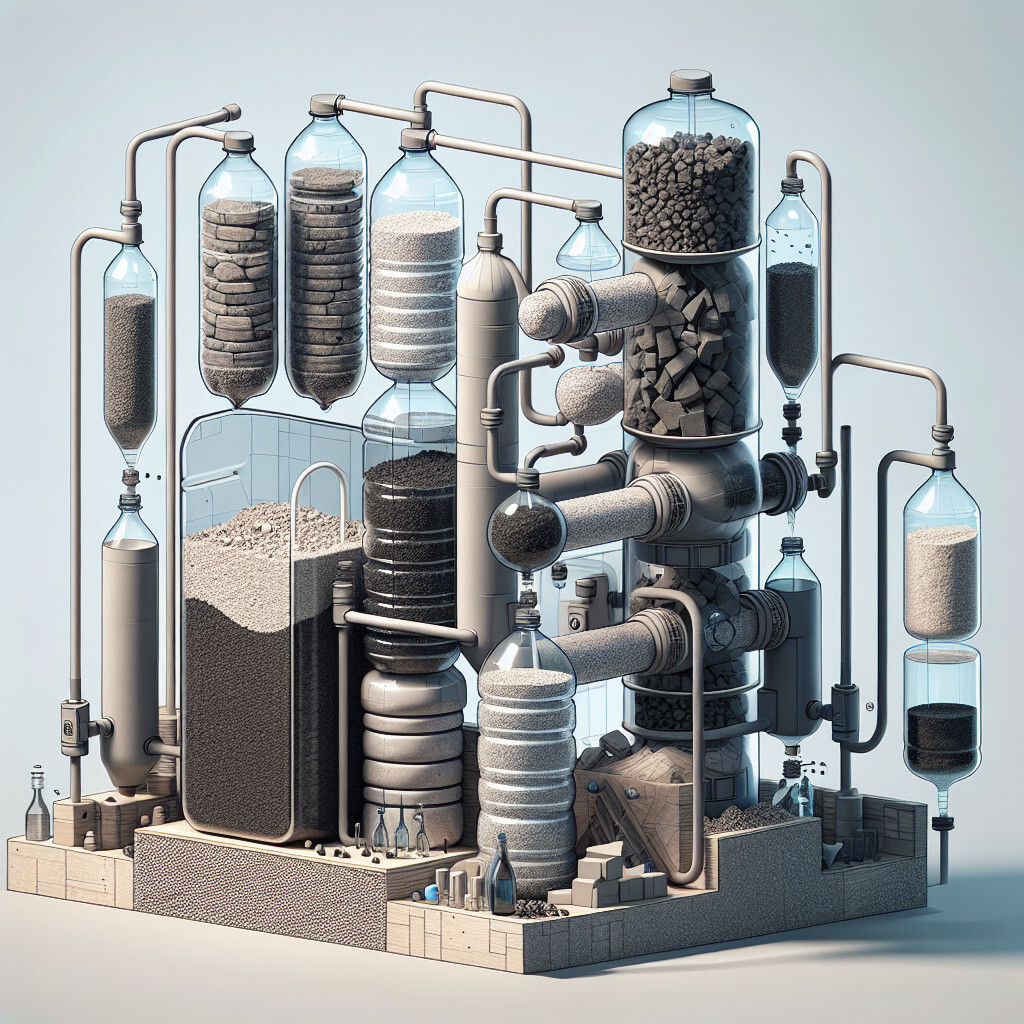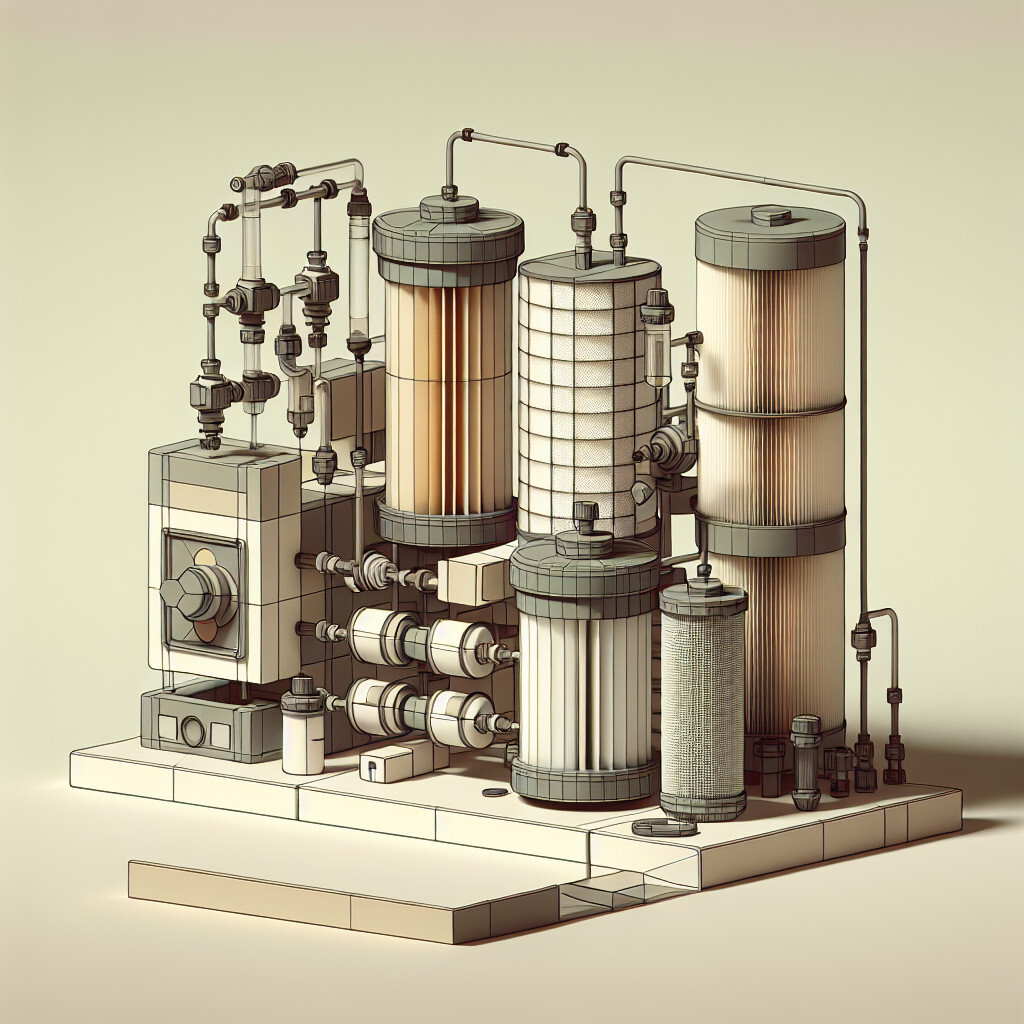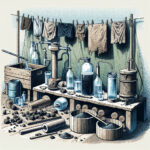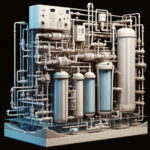-
Table of Contents
“Empowering Purity: Your DIY Filtration System Solution!”
Introduction

A DIY filtration system refers to a self-made setup designed to remove impurities from water, air, or other substances. This system can be built using readily available materials and basic techniques, making it a cost-effective and practical solution for purifying water or air in areas where commercial filtration systems may not be accessible or affordable. The DIY filtration system can range from simple designs using sand and charcoal to more complex systems incorporating advanced filtration materials. Despite its simplicity, a well-made DIY filtration system can effectively remove a significant amount of contaminants, providing cleaner, safer water or air for personal use.
Building Your Own DIY Filtration System: A Step-by-Step Guide
The concept of a DIY filtration system may seem daunting to many, but with a little bit of knowledge and the right tools, it can be a rewarding and cost-effective project. This article will provide a step-by-step guide to building your own DIY filtration system, allowing you to enjoy clean, filtered water without the hefty price tag of commercial systems.
The first step in building a DIY filtration system is understanding the basic principles of water filtration. Essentially, water filtration involves passing water through a medium that traps impurities, such as sand, activated charcoal, or ceramic. The type of medium you choose will depend on the specific contaminants you wish to remove from your water.
Once you have a grasp of the basic principles, you can begin gathering your materials. For a simple sand filtration system, you will need a large container, such as a plastic bucket or barrel, sand, gravel, and a spigot. If you wish to create a more advanced system that can remove chemical contaminants, you may also need activated charcoal and a ceramic filter.
The next step is to assemble your filtration system. Start by drilling a hole near the bottom of your container and fitting your spigot. This will allow you to easily access the filtered water. Next, layer your filtration materials inside the container. Start with a layer of gravel at the bottom, followed by a layer of sand. If you’re using activated charcoal or a ceramic filter, these should be added on top of the sand.
Once your filtration system is assembled, it’s time to test it. Pour some water into the top of the system and allow it to filter through. The water that comes out of the spigot should be clear and free of any visible impurities. If it’s not, you may need to adjust your filtration materials or add more layers.
It’s important to note that while a DIY filtration system can effectively remove many types of impurities, it may not be able to remove all contaminants, especially those that are microscopic or dissolved in the water. Therefore, it’s always a good idea to have your water tested before and after filtration to ensure it’s safe to drink.
Maintaining your DIY filtration system is also crucial. Over time, the filtration materials can become clogged with impurities and need to be replaced. Regularly check the clarity of the filtered water and replace the materials as needed.
In conclusion, building your own DIY filtration system can be a rewarding project that provides you with clean, filtered water. By understanding the basic principles of water filtration, gathering the right materials, and following the steps to assemble and maintain your system, you can enjoy the benefits of filtered water without the high cost of commercial systems. However, always remember to test your water before and after filtration to ensure it’s safe to drink. With these steps, you’re well on your way to creating a functional and cost-effective DIY filtration system.
The Benefits of Creating a Homemade Water Filtration System
Water is an essential element of life, and its quality directly impacts our health and wellbeing. However, in many parts of the world, access to clean, safe drinking water is not a given. Even in developed countries, tap water can contain contaminants that pose health risks. One solution to this problem is to create a homemade water filtration system. This DIY approach offers numerous benefits, from cost savings to improved water quality, and even the satisfaction of self-reliance.
Firstly, a homemade water filtration system can be a cost-effective alternative to commercial water filters. While the initial investment in materials may be similar or slightly higher, the long-term savings are significant. Commercial filters require regular replacement cartridges, which can be costly over time. In contrast, a DIY system can often be maintained and repaired using inexpensive materials, reducing the overall cost in the long run.
Secondly, creating your own water filtration system allows you to tailor it to your specific needs. Different regions have different types of contaminants in their water. By building your own system, you can design it to remove the specific contaminants that are present in your local water supply. This customization ensures that your filtered water is as clean and safe as possible.
Moreover, a homemade water filtration system can provide superior water quality compared to some commercial systems. Many commercial filters only remove certain types of contaminants, leaving others behind. A well-designed DIY system can potentially remove a wider range of contaminants, resulting in cleaner, healthier water.
In addition to these practical benefits, there is also a psychological benefit to creating your own water filtration system. The process of researching, designing, and building the system can be a rewarding experience. It fosters a sense of self-reliance and independence, knowing that you have the skills and knowledge to provide clean water for yourself and your family. This can be particularly empowering in emergency situations or in areas where access to clean water is limited.
Furthermore, building your own water filtration system can also have educational benefits. It provides a hands-on way to learn about water quality, environmental science, and engineering principles. This can be a great project for students, homeschoolers, or anyone interested in these topics.
Lastly, a homemade water filtration system can be more environmentally friendly than commercial options. Many commercial filters generate waste in the form of used cartridges that end up in landfills. A DIY system, on the other hand, can often be built using recycled or sustainable materials, and generates less waste over its lifetime.
In conclusion, creating a homemade water filtration system offers numerous benefits. It can save money, provide superior water quality, and be tailored to your specific needs. It also fosters a sense of self-reliance, provides educational opportunities, and can be more environmentally friendly than commercial options. While it does require some time and effort to build, the rewards are well worth it. So, if you’re looking for a way to improve your water quality, consider the DIY approach. You might be surprised at what you can achieve.
DIY Filtration Systems: How to Purify Your Water at Home
Water is an essential element of life, and its purity is of utmost importance for maintaining good health. However, the quality of water we consume is often compromised due to various factors such as pollution, inadequate treatment, and aging infrastructure. This has led many individuals to seek alternative methods to ensure the water they consume is safe and clean. One such method is the creation of a DIY filtration system. This article will guide you through the process of creating your own water purification system at home.
The first step in creating a DIY filtration system is understanding the basic principles of water filtration. Essentially, water filtration involves passing water through a medium that traps impurities, allowing clean water to flow through. The medium can be anything from activated charcoal to ceramic, sand, or even cloth. The choice of medium depends on the type of impurities you wish to remove from your water.
The simplest form of a DIY filtration system is a charcoal-based filter. Activated charcoal is known for its ability to absorb a wide range of impurities, including chlorine, pesticides, and industrial waste. To create a charcoal filter, you will need a plastic bottle, activated charcoal, a coffee filter, and clean sand. Cut the bottom off the bottle and turn it upside down. Place the coffee filter at the bottleneck to prevent the charcoal from escaping, then fill the bottle with alternating layers of charcoal and sand. Pour water into the bottle and let it filter through. The charcoal and sand will trap impurities, providing you with cleaner water.
Another popular DIY filtration system is a ceramic filter. Ceramic has tiny pores that can filter out bacteria and other microscopic impurities. To create a ceramic filter, you will need a ceramic candle, a plastic bucket with a lid, and a tap. Drill a hole in the bottom of the bucket and fit the ceramic candle into it. Secure the candle with a nut and washer, then fit the tap into a hole drilled in the side of the bucket. Fill the bucket with water and cover it with the lid. The water will slowly seep through the ceramic candle and out of the tap, leaving impurities behind.
While these DIY filtration systems can significantly improve the quality of your water, it’s important to note that they may not remove all types of contaminants. For instance, they may not effectively filter out heavy metals or certain types of bacteria. Therefore, it’s recommended to use these systems as a supplement to, rather than a replacement for, traditional water treatment methods.
In conclusion, creating a DIY filtration system can be a cost-effective and rewarding way to improve the quality of your water. Whether you choose a charcoal or ceramic filter, the process is relatively simple and requires only basic materials. However, it’s crucial to remember that these systems should be used in conjunction with other water treatment methods to ensure the water you consume is as clean and safe as possible. With a little effort and creativity, you can take control of your water quality and contribute to a healthier lifestyle.
Understanding the Science Behind DIY Filtration Systems
The science behind DIY filtration systems is both fascinating and practical, offering a hands-on approach to understanding and applying principles of chemistry and physics. These systems, often created using everyday materials, are designed to remove impurities from water, making it safe for consumption or use. The process of filtration is a fundamental concept in science, and understanding it can provide valuable insights into the workings of nature and technology alike.
Filtration, in its most basic form, is a method used to separate solids from liquids. This is achieved by passing the mixture through a medium that only allows the liquid to pass through, leaving the solid particles behind. The medium used for this purpose is called a filter. In a DIY filtration system, this could be anything from a coffee filter to a piece of cloth or even a bed of sand or gravel.
The science behind this process is rooted in the principles of size exclusion and adsorption. Size exclusion is the simpler of the two concepts. It is based on the idea that larger particles cannot pass through the small pores of the filter, while smaller particles, such as water molecules, can. This is why a coffee filter can separate coffee grounds from the liquid coffee: the pores in the filter are small enough to prevent the larger coffee grounds from passing through, but large enough to allow the smaller water molecules to do so.
Adsorption, on the other hand, is a bit more complex. It involves the adhesion of atoms, ions, or molecules from a gas, liquid, or dissolved solid to a surface. In the context of a DIY filtration system, this means that certain impurities in the water can adhere to the filter material, effectively removing them from the water. This is why activated charcoal is often used in water filtration systems: its porous surface is excellent at adsorbing a wide range of impurities, including certain chemicals and heavy metals.
However, it’s important to note that not all impurities can be removed through simple filtration. Some contaminants, such as bacteria and viruses, are too small to be effectively filtered out. Others, like certain chemicals, may not be adsorbed by the filter material. This is why most commercial water filters also include a disinfection step, often using chemicals like chlorine or ultraviolet light.
In conclusion, the science behind DIY filtration systems is a fascinating blend of chemistry and physics. By understanding the principles of size exclusion and adsorption, it’s possible to create a simple, effective filtration system using everyday materials. However, it’s also important to remember the limitations of these systems, and to ensure that any water intended for consumption is properly disinfected. Whether you’re a science enthusiast looking to understand the world around you, or a practical DIYer seeking to improve your self-sufficiency, understanding the science behind filtration can be both enlightening and empowering.
Q&A
1. Question: What is a DIY filtration system?
Answer: A DIY filtration system is a self-made system designed to remove impurities from water, air, or other substances, typically using physical barriers, chemical processes, or biological processes.
2. Question: How can you make a DIY water filtration system?
Answer: You can make a DIY water filtration system by using a plastic bottle, gravel, sand, and activated charcoal. Cut the bottom off the bottle, then layer the materials inside: first a layer of gravel, then sand, and finally activated charcoal. Pour water through the top and collect the filtered water from the bottom.
3. Question: What materials are needed for a DIY air filtration system?
Answer: For a DIY air filtration system, you would need a box fan, a furnace filter with a high MERV rating, and some tape. The filter is attached to the intake side of the fan using the tape, and the fan is then used to draw air through the filter, removing airborne particles.
4. Question: What are the benefits of a DIY filtration system?
Answer: The benefits of a DIY filtration system include cost savings, as it is often cheaper to build your own than to buy a commercial product. It also allows for customization based on specific needs, and provides a sense of accomplishment from creating a functional system yourself.
Conclusion
A DIY filtration system is a cost-effective and efficient solution for purifying water or air at home. It allows individuals to have control over the quality of their water or air by choosing the materials and methods that suit their specific needs. However, it requires a certain level of technical knowledge and skill to set up and maintain. Despite this, it is a sustainable and environmentally friendly option that promotes self-sufficiency.






